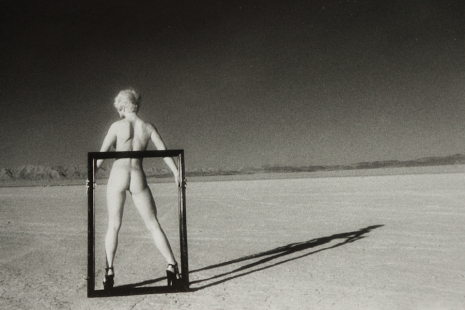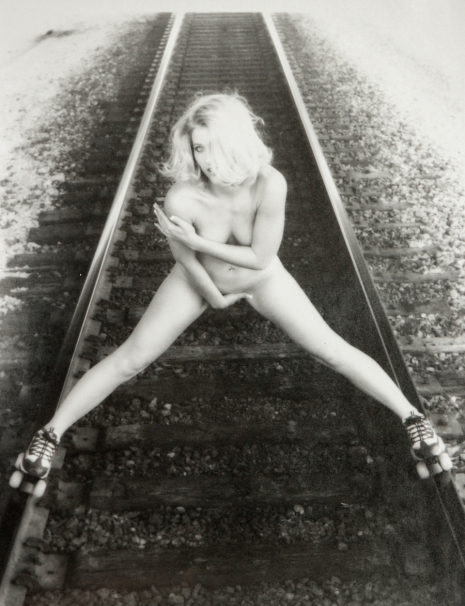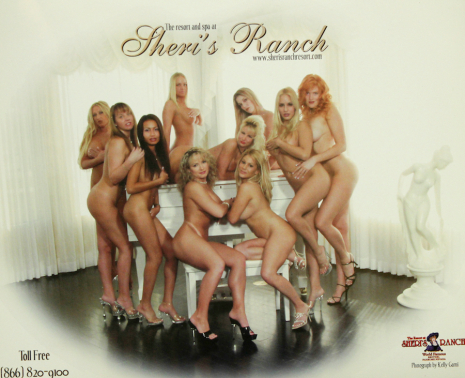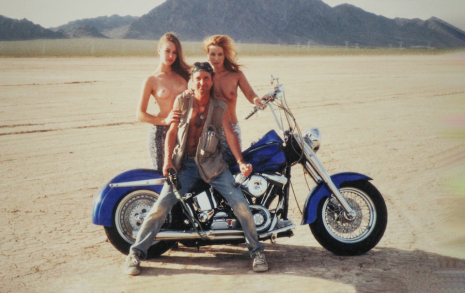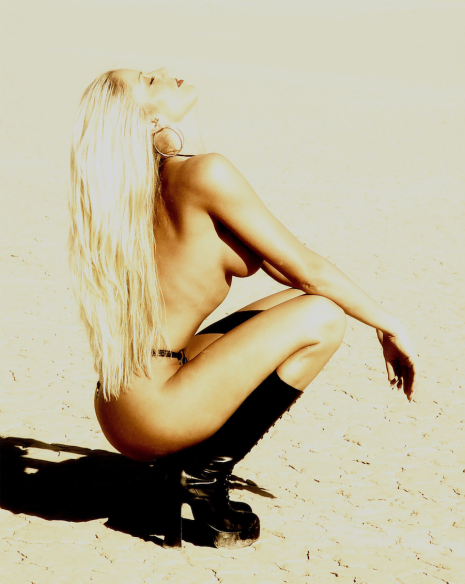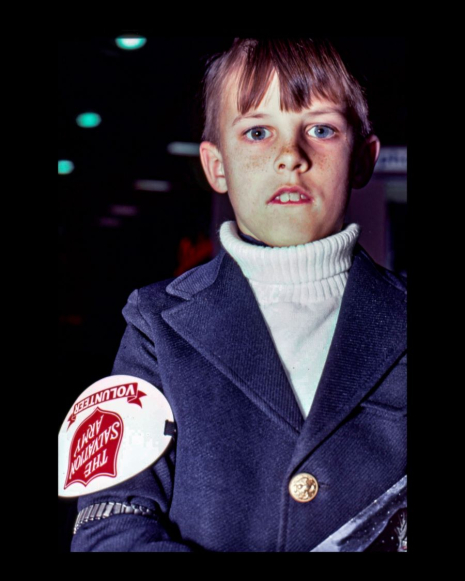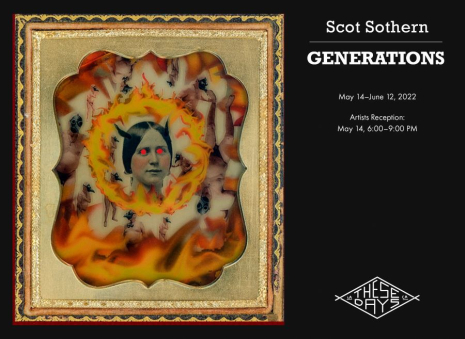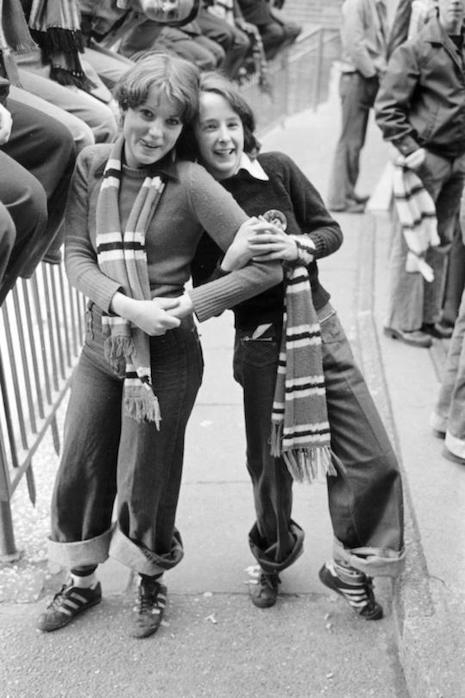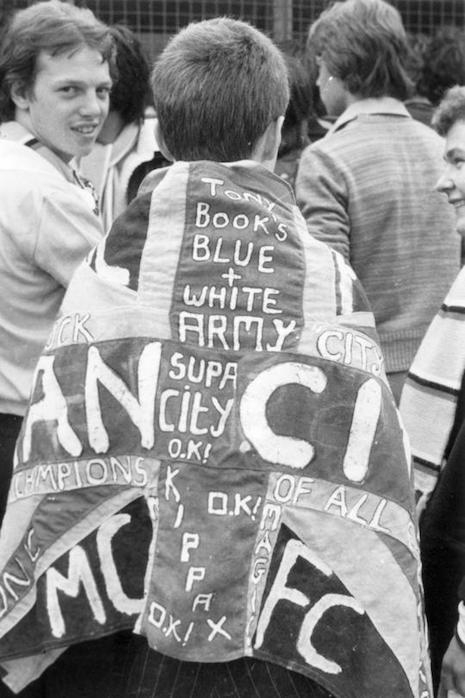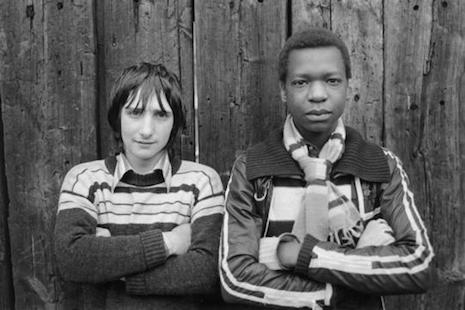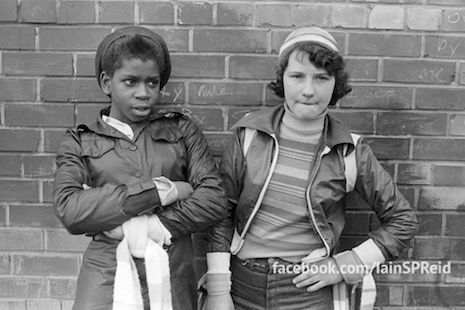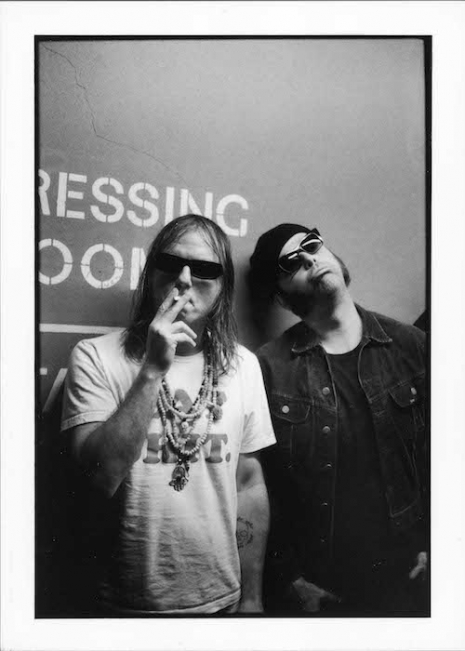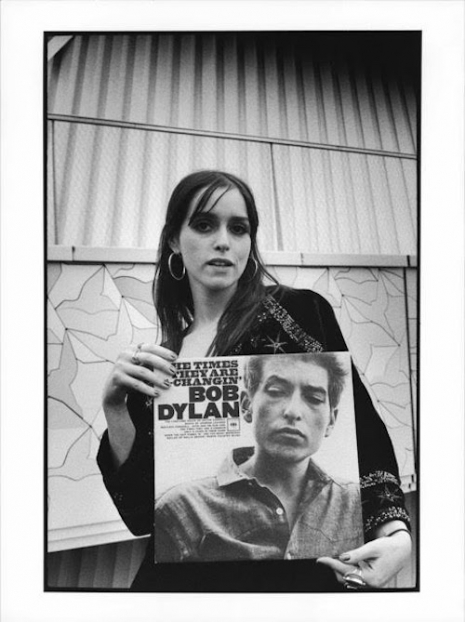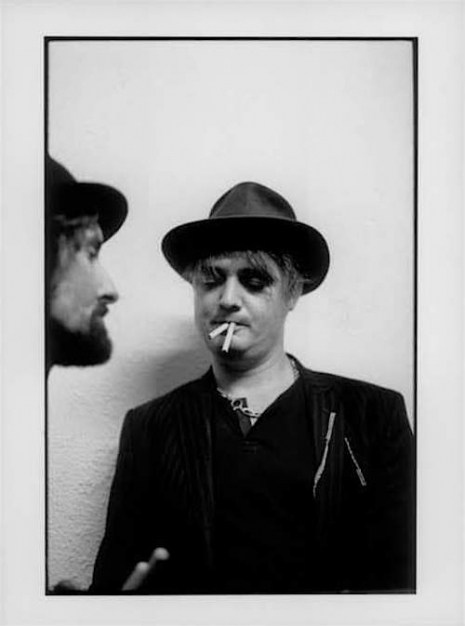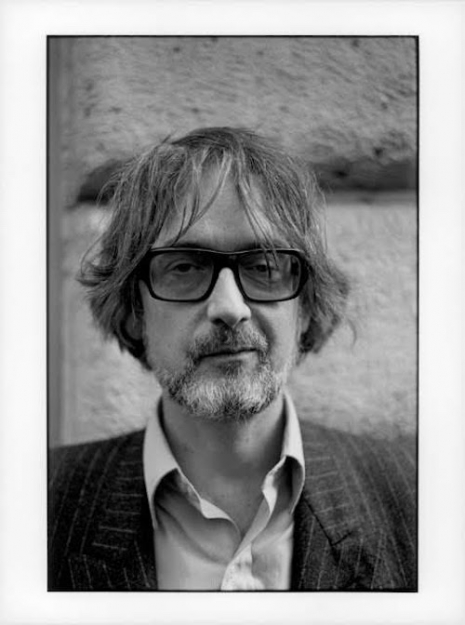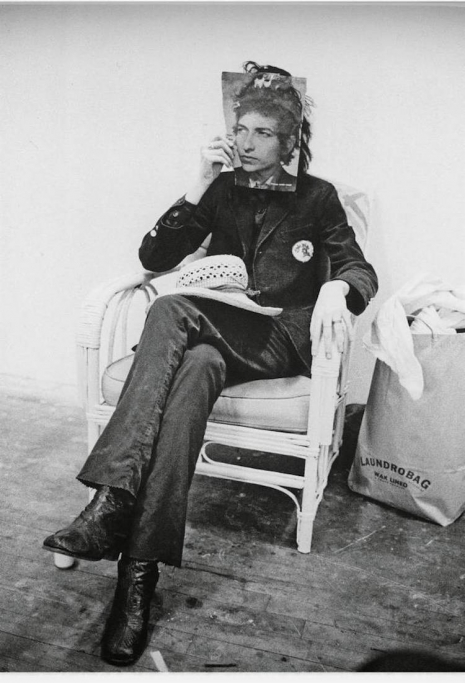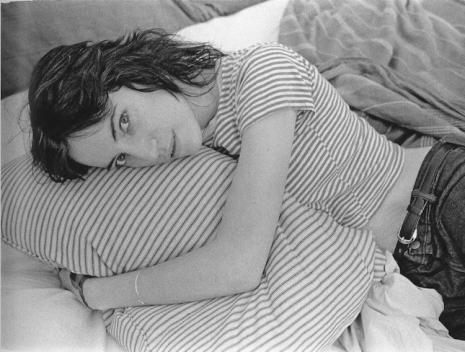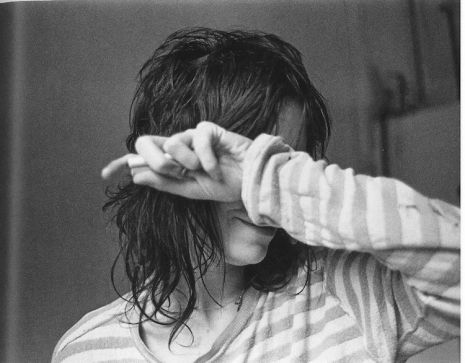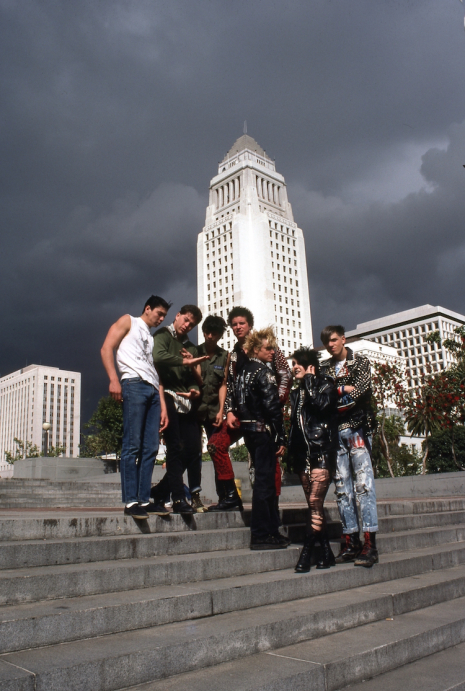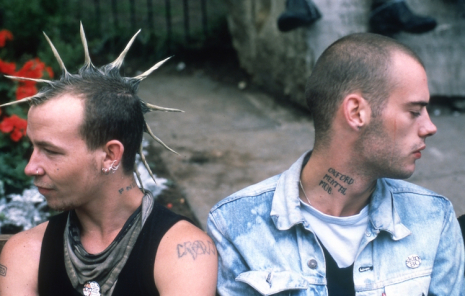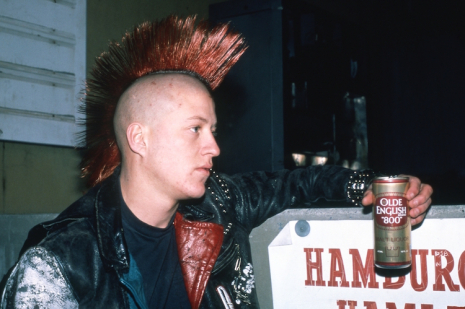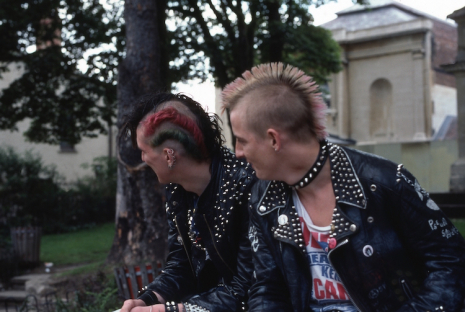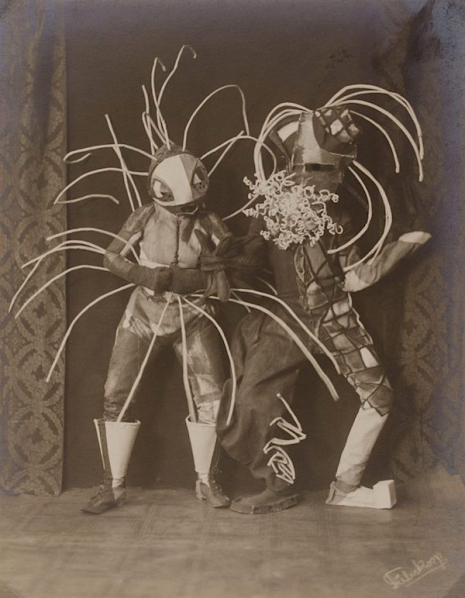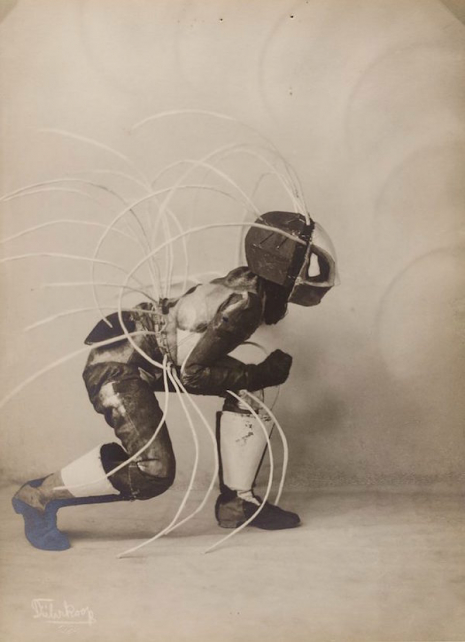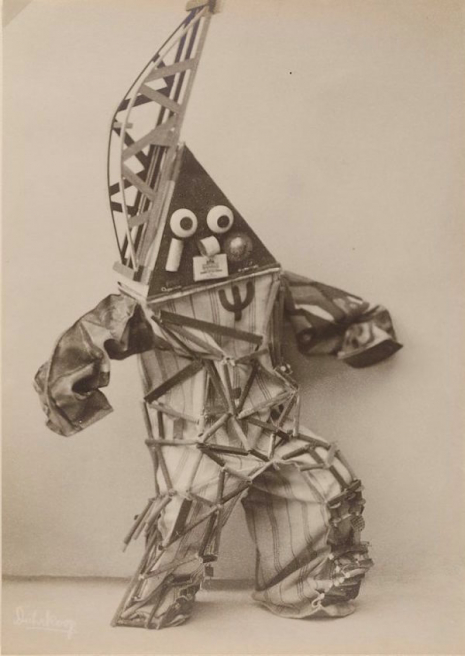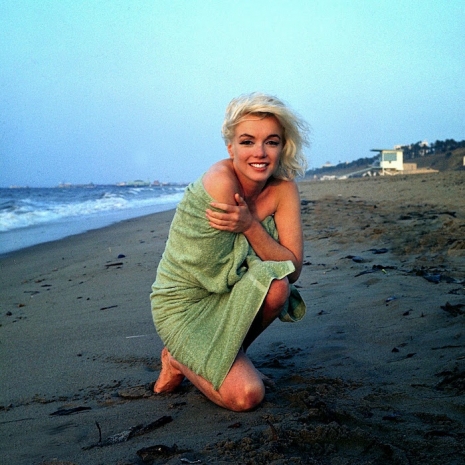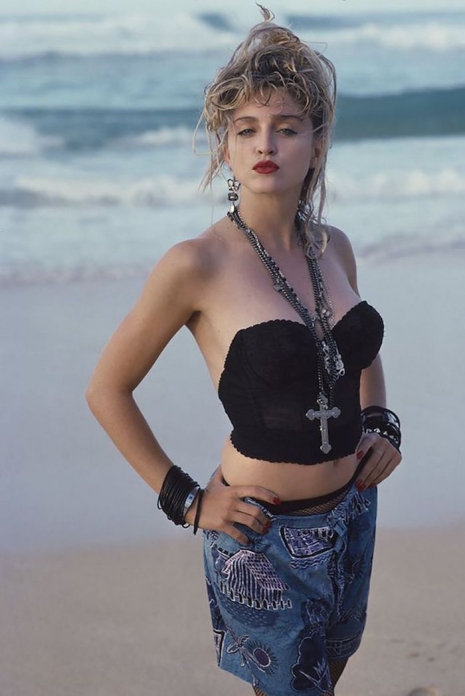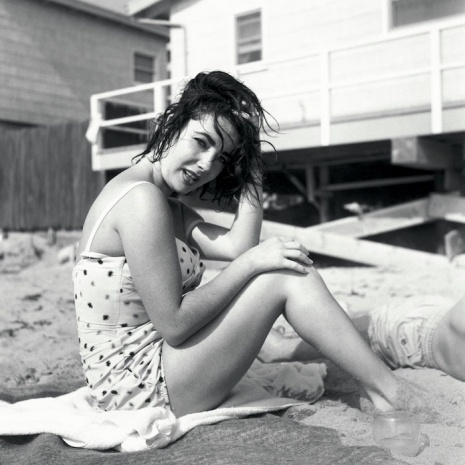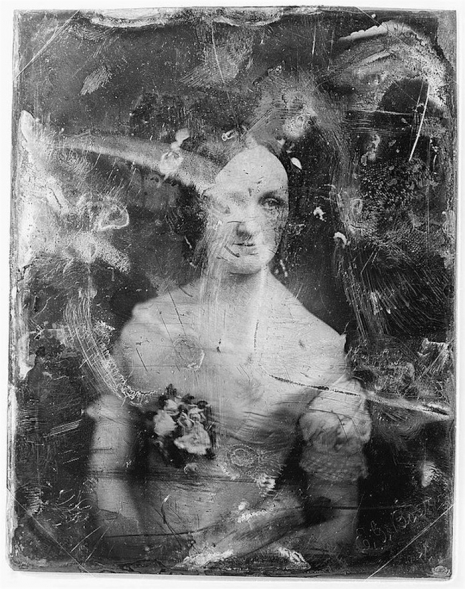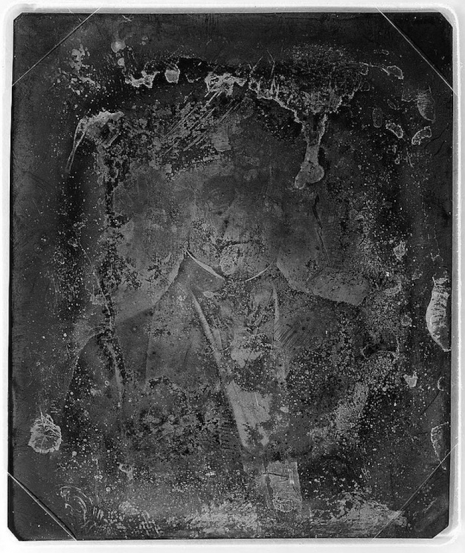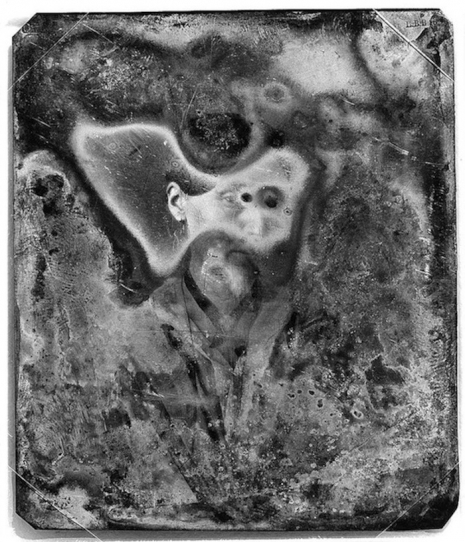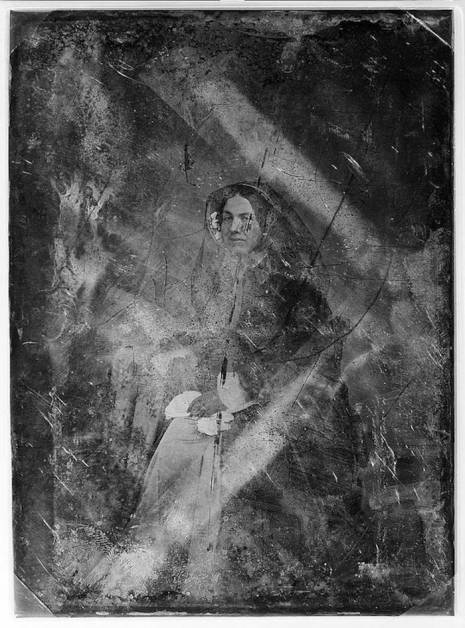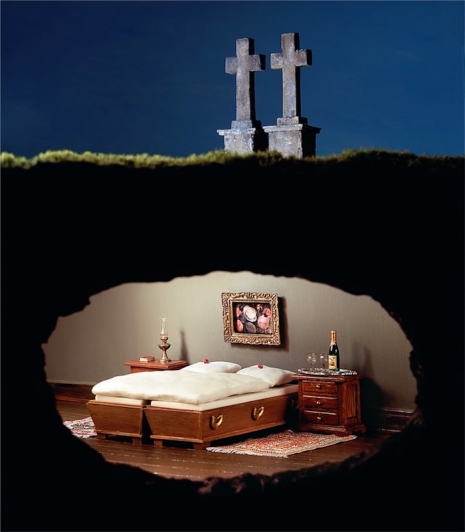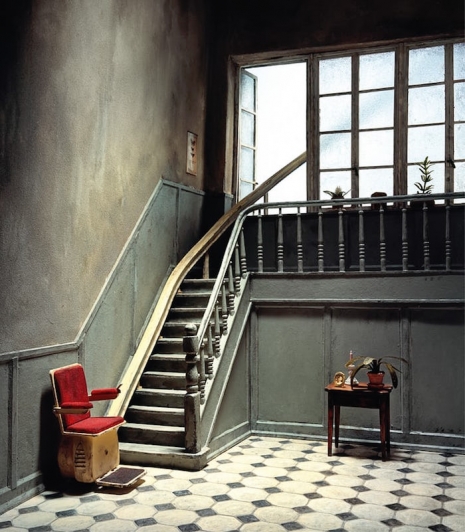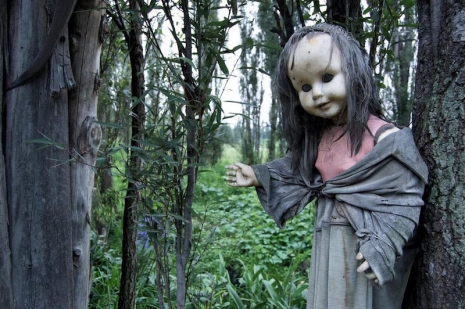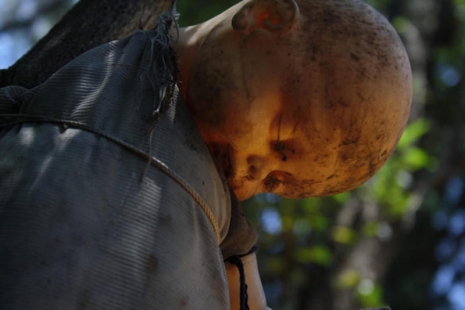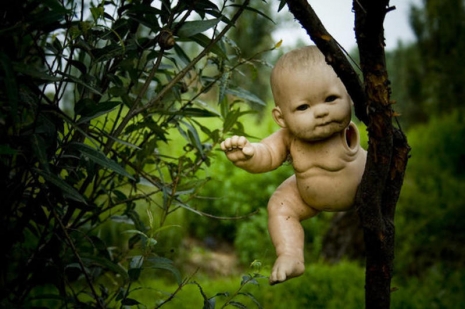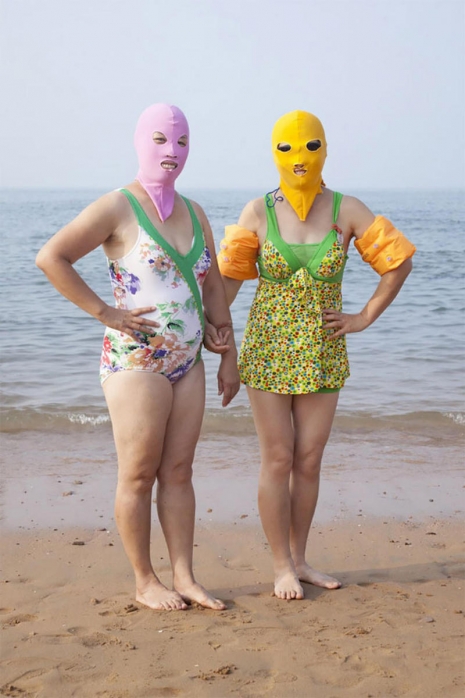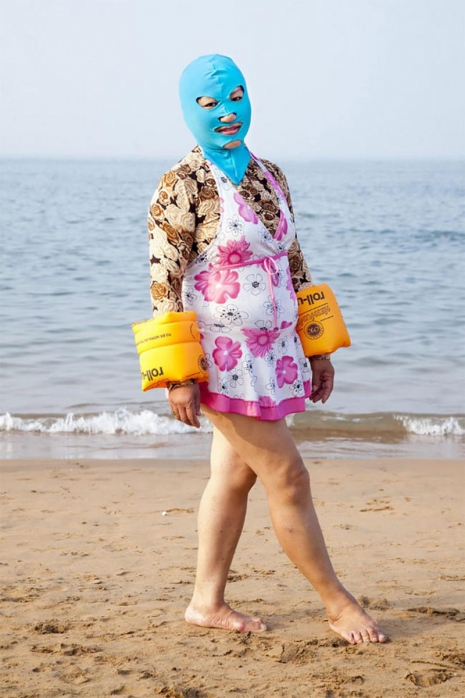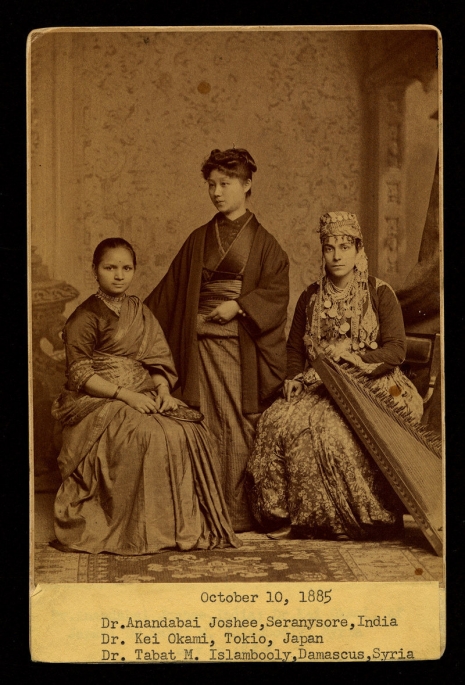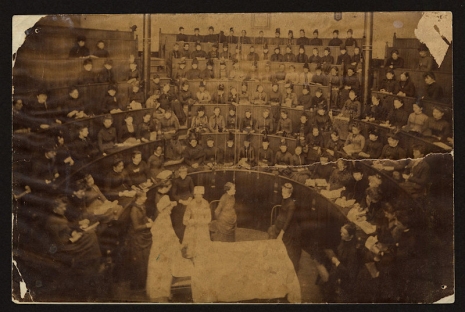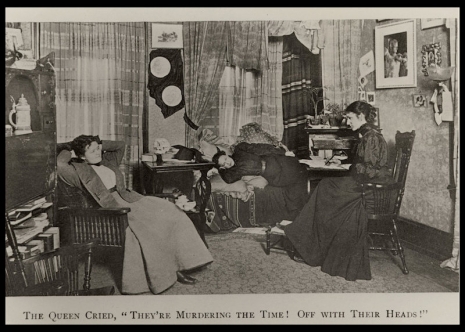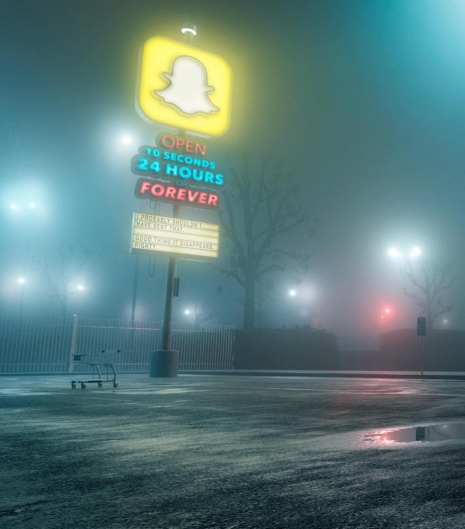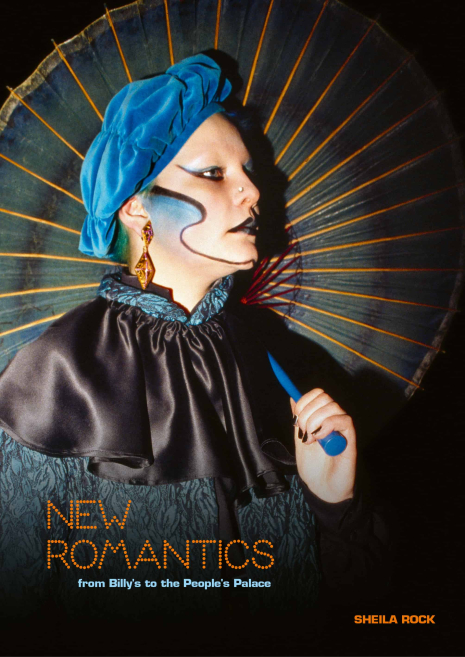
In the ever-evolving tapestry of fashion and youth subcultures, the New Romantics of the 1980s emerged as a vibrant and revolutionary movement. Known for their flamboyant style, gender-bending fashion, and a passion for all things theatrical and Bowie-related, the New Romantics left an indelible mark on pop culture via groups like Depeche Mode, Duran Duran, Culture Club, and Spandau Ballet. And there was also Visage, the post punk synthpop supergroup comprised of members, then present or former, of Magazine (Barry Adamson, Dave Formula), Siouxsie and the Banshees (John McGeoch), Ultravox (Midge Ure, Billy Currie) along with Steve Strange and Rusty Egan, who arguably started the whole scene by giving it a place to flourish, first at a West End dive bar called Billy’s and later at the Blitz nightclub.
Embedding herself among these after dark denizens, photographer Sheila Rock captured this extraordinary scene like no other. Rock’s remarkable images of the New Romantics preserves a moment in time when fashion, music, and rebellion converged to create a cultural phenomenon. She’s put together a new book of these portraits titled New Romantics - From Billy’s to the People’s Palace published by MOONBOY Books.
I asked Sheila Rock a few questions via email.
How did the New Romantic scene first start to get off the ground?
Sheila Rock: The name ‘New Romantics’ didn’t come into use until much later – but the scene was really born with the Bowie nights at Billy’s in the autumn of 1978. Steve Strange and Rusty Egan chose this very run-down bar on the edge of Soho as the location for their nights dedicated to the music of David Bowie and of course it attracted a highly creative crowd – many of them had been part of the punk scene, including Steve himself, so they were predisposed to dressing up and having a good time and cared little about what others thought!

Rusty Egan, left, Steve Strange, 2nd from right, at Billy’s 1978
When did it reach critical mass and which media outlets first noticed?
The Face and iD magazines were probably the first to report the movement in relation to what people were wearing - and Spandau Ballet were regulars at the Blitz so reports of their low-key/secret gigs around London started to appear in the music press along with photos of their exotically dressed followers. It was the usual kind of osmosis, where a small cult becomes mainstream by attracting attention – almost a form of self-destruction.
Spandau Ballet released ‘To Cut a Long Story Short’ in October 1980 and it became a hit as did Visage’s single ‘Fade to Grey’ when it was released a month later; of course Steve’s unique look attracted a lot of attention – he was interviewed on primetime television in the UK and the song was played around the world and Steve’s photo appeared in countless music and fashion magazines which I suppose heralded a change in the way the regulars at the Blitz felt about the night they had built around themselves – everyone now wanted to go and the queue became unmanageable; famously, Steve turned Mick Jagger away as he was not sufficiently well-dressed to gain entry.
By 1981, when Steve and Rusty held the Valentine’s Day Ball at People’s Palace, bands like Ultravox, Japan and Depeche Mode had reached a broader public and brought the dressing-up culture to the fore.
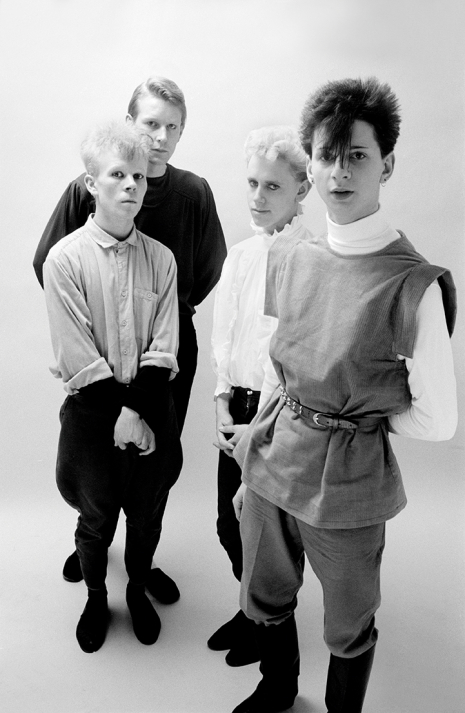
Depeche Mode, 1981
The people who went to Billy’s and The Blitz, what sort of day jobs did they have or were they mostly on the dole?
Many were students – fashion and design particularly; Stephen Jones, the milliner, was a regular at the Blitz. It was a young crowd, so understandably some were unemployed or had yet to find their role – many regulars went on to become stars; Spandau Ballet, Culture Club, Visage, Ultravox, Sade, Wham!, Bananarama – the DJ Jeremy Healy was a regular, as well as some lesser-known but super-stylish bands like Blue Rondo a La Turk and Animal Nightlife
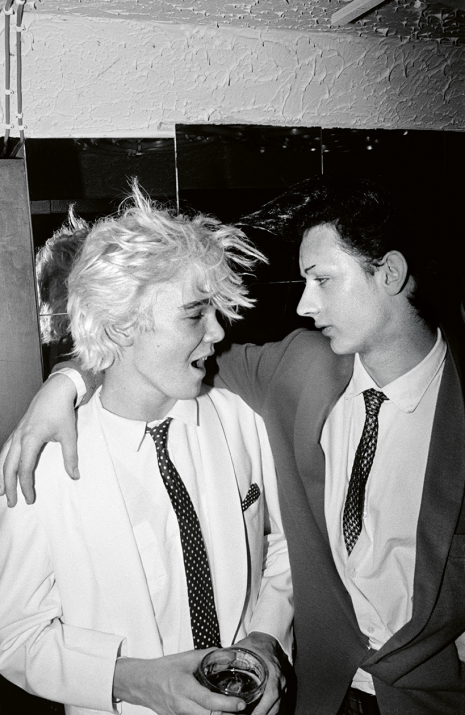
A young George O’Dowd, right, at Billy’s, 1978
How friendly was this scene? Were the participants more interested in looking good and posing or having a good time?
I think most people just wanted to have a good time whilst looking great – I’m sure there was rivalry, there always is where style is concerned – but the overall feel was one of a close-knit group of like-minded people enjoying themselves in a city which was, at that time, a grey metropolis scarred by strikes and unemployment – a far cry from the London we know now.
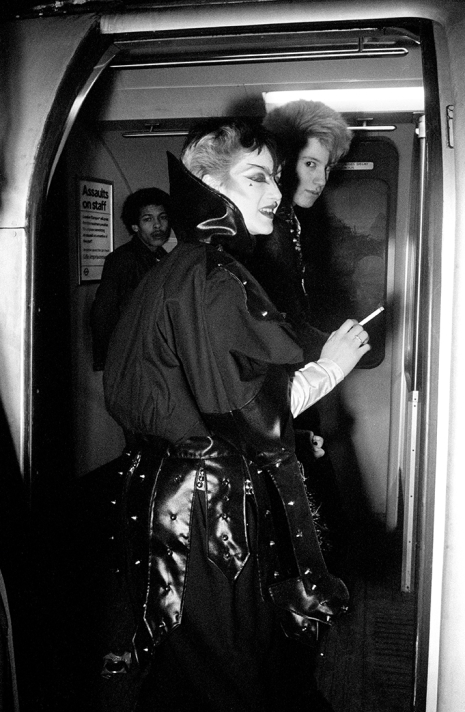
Arriving at People’s Palace by Tube, 1981
How dangerous was it for the New Romantic types to walk around London, or take the Tube, dressed like that?
I don’t think it was dangerous as a rule – punk had already given the general public some exposure to counter-cultural style, but physical violence was not a common issue - although I’m sure there were incidents; there was certainly name-calling and taunting, but most young people shrugged this off. People rarely travelled to clubs on their own, going in groups was much more fun and of course there was safety in numbers! (photo)

Jane Khan, Patti Bell and friend at People’s Palace
Who had the most elaborate outfits?
The Birmingham-based designers Jane Khan and Patti Bell created some wonderfully outlandish outfits – and Martin Degville, who became the frontman of Sigue Sigue Sputnik was incredibly imaginative.
What was the mix like in the Blitz? Girls vs. boys, gay vs. straight, black vs. white?
The whole ethos of Billy’s and the Blitz was based on style and attitude – if you had both then you were welcome. The balance between girls and boys was probably about equal – but what you have to remember is that those clubs were not set up attract gay or straight, black or white – dressing up, Bowie and a good time were the prerequisites! You can see from the photos how tiny the Blitz was, everyone squeezed in together.
Aside from the people who went on to be notable or famous, were there any other characters who especially stood out?
In a scene where ‘dress to excess’ was the byword, it’s hard to pick out specific individuals – but the young girl I chose to be on the cover of the book expressed an innocence and creative flare I thought looked beautiful.
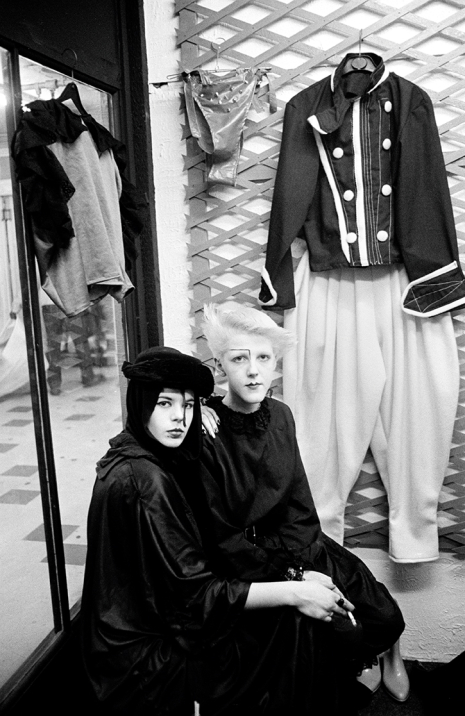
Scarlett Cannon, right
Another striking and imaginative figure was Scarlett Cannon – she always looked amazing – her style has become something of a legend, with her dramatically cropped and sculpted hair and stark makeup.
Stephen Linard was a stylist by trade and his clothing combinations were always exotically full-on.

Stephen Linard at People’s Palace 1981
Tell me about the new book.
The New Romantics book is a social document of a particular time where music and fashion were celebrated.
Whilst I dress in simple black, I am forever attracted to theatrical and flamboyant self-expression. Clothes make a statement. The New Romantics scene caught my attention, and I was compelled to photograph club life and the individuals that made it happen. Young people were having fun and exploring their creativity.
Nightclubs were the catwalks and an inspiration for new ideas. Electronic pop music punctuated the scene and bands like Visage and Depeche Mode were the heroes. This book captures the zeitgeist of this all too brief movement; a moment when lipstick and colour ruled.
New Romantics - From Billy’s to the People’s Palace is published by MOONBOY Books as a strictly limited edition of 800 copies on 1st November. Advance orders are now being taken at www.moonboy.space








